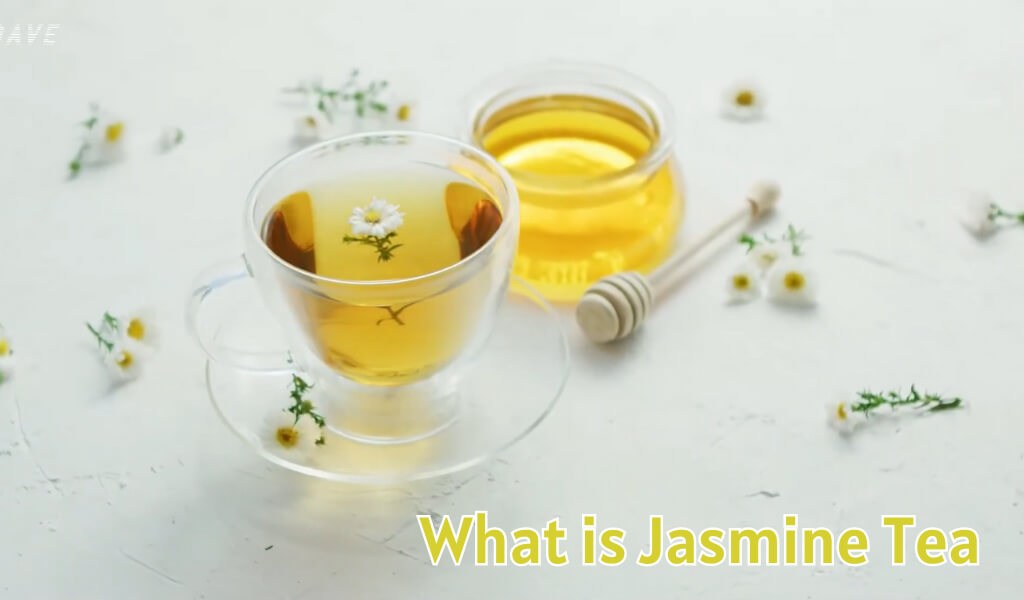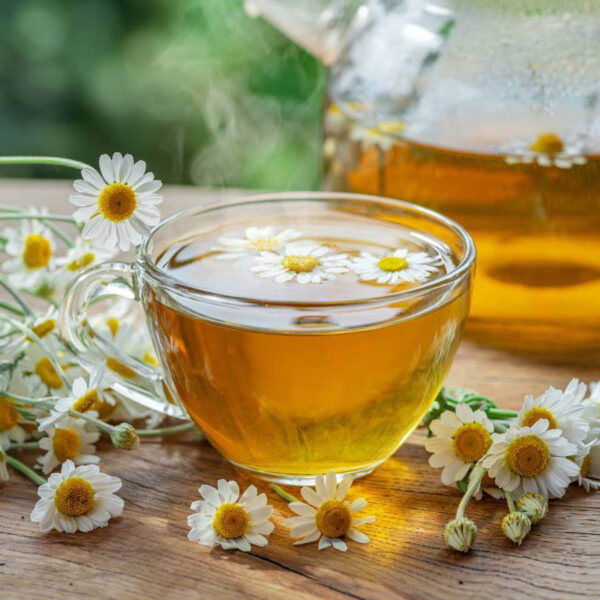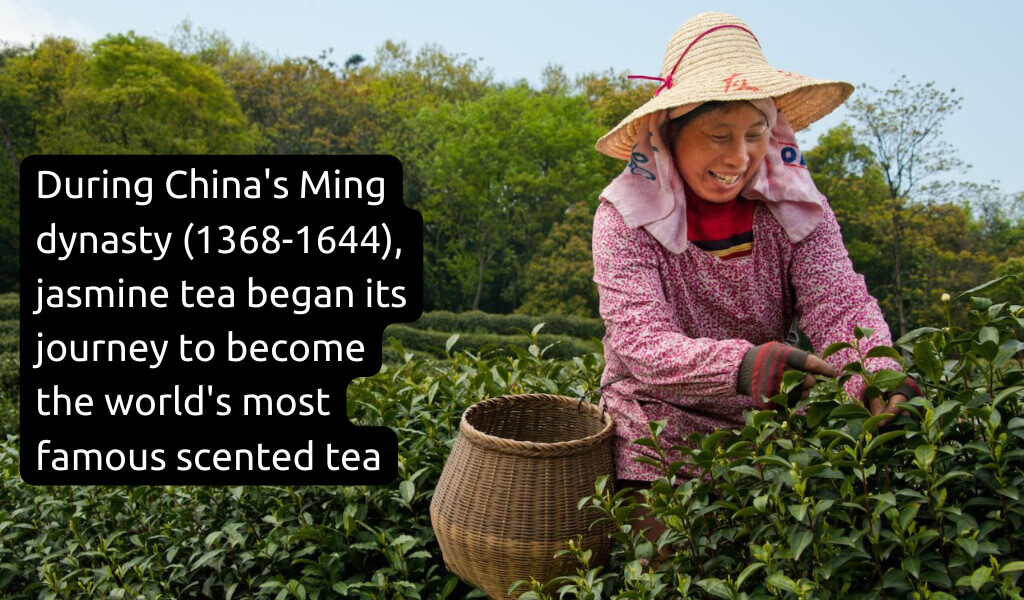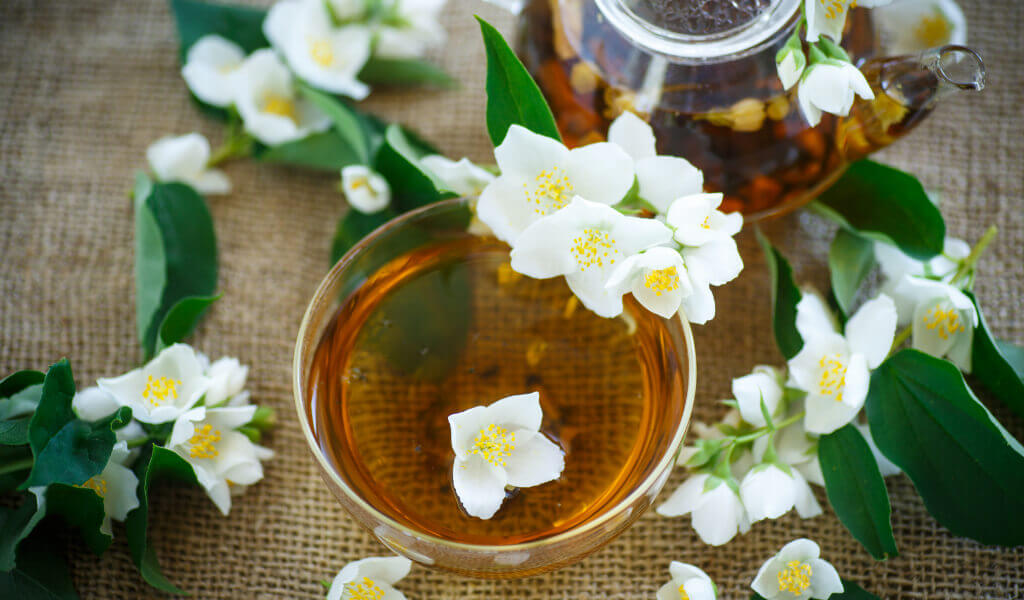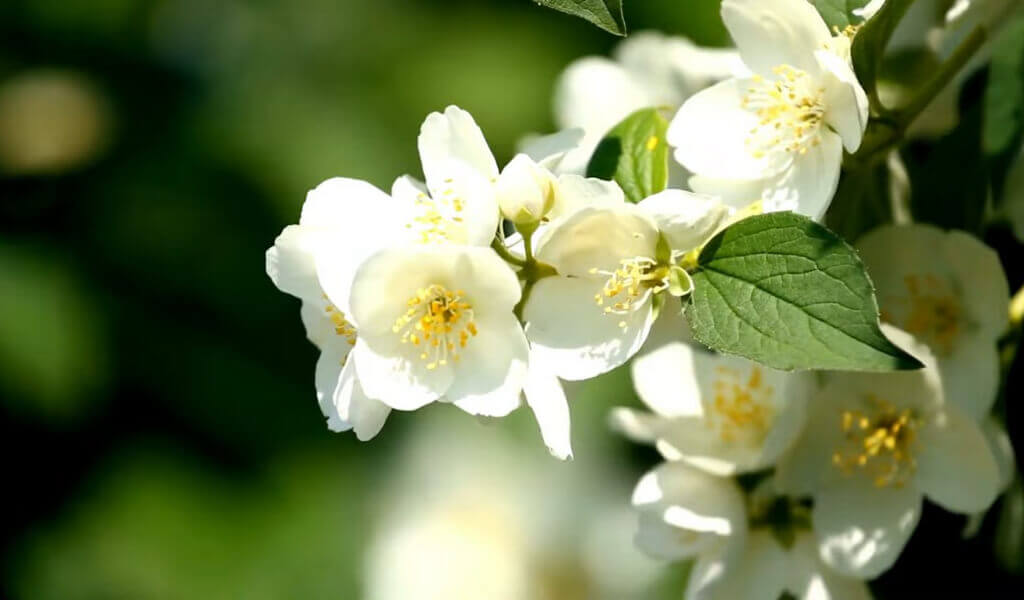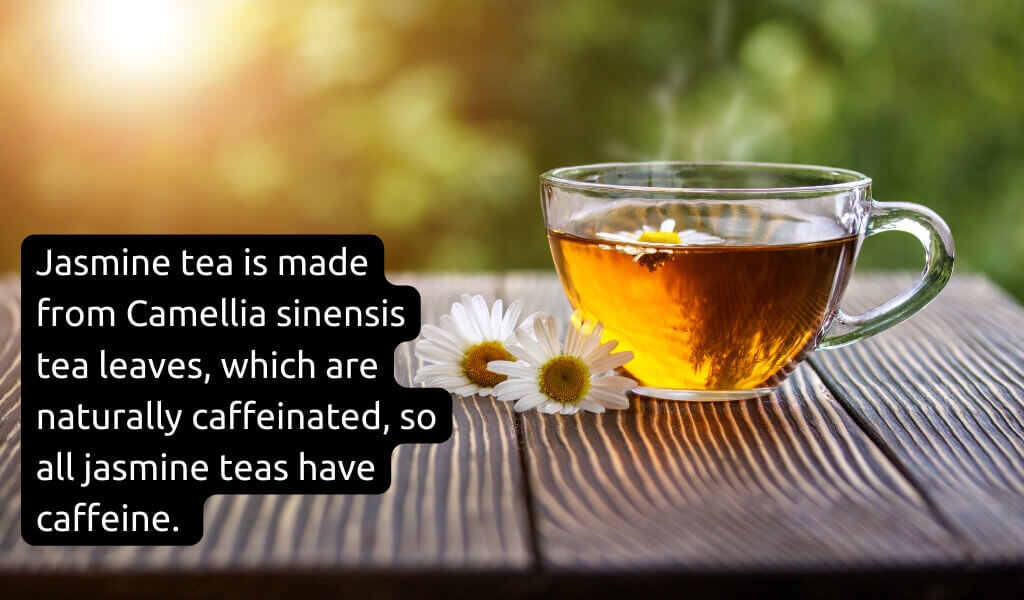If you’re wondering what is jasmine tea, you’re in the right place! Are you looking to expand your tea horizons beyond the usual suspects, like green and black tea?
In this post, we’ll go through the history of jasmine tea, as well as the health benefits of tea and how to make the ideal cup.
Quotes of tea at Today
A woman is like a tea bag – you can’t tell how strong she is until you put her in hot water. – Eleanor Roosevel
What is jasmine tea?
Jasmine tea is typically made using Green tea, although some producers also offer jasmine-flavored White and Black teas. Generally, Green tea has less caffeine per cup than Black tea, but slightly more caffeine than White tea.
@freshsteeps Reply to @kibbles16 comment your favorite tea & I’ll tell you all about it & the caffeine! #jasminetea #greentea #teatok #tea
When the Jasmine blossoms are added, they bring a subtle sweetness and fragrance to the tea. In China, this is one of the most beloved scented Chinese tea around!
Jasmine tea has a sweet and fragrant taste because of the aromatic jasmine flowers that are added to it.
What makes this delightful drink so special? It’s all thanks to the aromatic jasmine flowers added to it! Did you know that these flowers come from two types of jasmine plants – Common Jasmine and Sampaguita
They both belong to the olive family, Oleaceae, producing intensely fragrant and sweet-smelling flowers.
Where does jasmine tea come from?
The jasmine plant thrives in high-altitude mountain regions. Fujian province in China is renowned for producing the finest jasmine tea, while other provinces such as Hunan, Jiangsu, Jiangxi, and Guangdong also cultivate this fragrant beverage.
Surviving artifacts from that time show detailed floral patterns and references in porcelain, paintings, embroidery, decor, and literature. Not surprisingly, flowers like chrysanthemum, osmanthus, orchid, and jasmine made their way into food and tea during this era.
The Qing dynasty (1644-1911) was a time of tea-flavor revolution! Adventurous taste buds added bergamot, lychee, and zesty orange to their tea blends, creating a truly aromatic experience.
However, with its alluring scent and delicate flavor, jasmine became one of the first flavored teas exported from China on trade ships heading West in the late 1800s. The world soon fell in love with jasmine, and its popularity has continued growing.
But…
The origins of Common Jasmine are shrouded in mystery. Still, it’s believed to have originated in the Middle East, particularly in Iran, Afghanistan, and Pakistan (where it’s the national flower), as well as in India, Nepal, and certain regions of the Himalayas.
Although ancient Chinese texts mention Common Jasmine, it’s thought that the plant was brought to China from Persia. This deciduous, vine-like plant is grown in many temperate parts of the world, including France, Italy, Portugal, Florida, and the West Indies.
Common Jasmine’s beautiful, white, star-shaped flowers bloom in the summertime and release their lovely fragrance.
What type of tea is jasmine?
Jasmine tea is a fragrant tea infused with the essence of freshly bloomed jasmine flowers, adding a subtle floral taste to the tea. It is commonly made with green tea, although white, black, and oolong jasmine-scented teas are also available.
Sometimes these variations are simply flavored with jasmine, but other times they’re blended with other ingredients of jasmine tea to create more complex flavors, like dessert teas.
What is in jasmine tea?
Jasmine tea is a fragrant tea infused with the essence of jasmine flowers. It is typically prepared using Green tea as the base, although white or black tea can also be used. Adding jasmine blossoms imparts a gentle sweetness and delightful aroma to the tea.
But is jasmine tea Green tea? Not surprisingly, flowers like chrysanthemum, osmanthus, orchid, and jasmine made their way into food and tea during this era.
Use
Firstly, it’s a natural relaxant that can help alleviate stress, tension, and anxiety, leaving you feeling calmer and relaxed.
Additionally, it’s great for your cells because its antioxidant properties counteract cell deterioration and can even help combat certain autoimmune diseases. It’s been found to be particularly helpful for those with neurodegenerative diseases.
Jasmine tea ceremony also helps control cholesterol levels and can help prevent hypertension and cardiovascular problems.
Jasmine tea culture can even treat wound infections thanks to its antiseptic properties. Not only that, but the combination of jasmine and tea helps regulate sugar levels in people who don’t have diabetes.
Finally, while there are some Jasmine tea side effects, if you’re trying to lose weight, drinking Jasmine tea may be a terrific compliment to a good diet and active lifestyle.
Oh, and did we mention that its Green tea base contains catechins, which are part of the group of polyphenols and are beneficial in oral health? So drinking jasmine tea can even help prevent cavities!
Read More:
- What is Sencha tea? Its Uses, Types Of Use, Buying and Storing
- What Dragon’s Well Tea? Its Types, Benefits And Brewing Tips
- What is Lu’An Melon Seed Tea? Origin, Characteristic & Health Benefits
- How Biluochun Tea is Produced
- The Health Benefits of Lushan Yunwu Tea
- What is Gunpowder Green Tea? Ultimate Benefits, Flavor & More
- Discover the Different Types of Green Tea: A Comprehensive Guide
Safety & Side Effects
In general, jasmine tea is quite helpful to health and has few side effects.
However, it contains caffeine, which may cause issues for certain people. Caffeine use in excess can cause anxiety, restlessness, jitters, and digestive difficulties. Pregnant women should avoid caffeine due to the increased risk of miscarriage.
Jasmine tea also contains catechins, which may hinder the absorption of dietary iron by the body. When consumed in large quantities, catechins could elevate the likelihood of iron deficiency anemia.
How is Jasmine Tea Made?
Sampaguita, the national flower of the Philippines, originally hails from a small area in the eastern Himalayas spanning Bhutan and India.
Did you know that Sampaguita, a fragrant flower from South Asia, has spread worldwide throughout tropical regions? This versatile bloom is widely used to create beautiful leis, garlands, and crowns for all events, from joyous weddings to somber funerals. It’s even been designated as one of the country’s national flowers in Indonesia, representing purity and sanctity. Pretty cool, huh?
Jasmine tea is a flavored or scented tea, like Earl Grey tea, infused with bergamot. It’s made by adding jasmine flowers to tea leaves; flavors like fruit, spices, oils, or extracts can also be added.
The jasmine plant grows well in high mountainous elevations similar to those where China’s most famous teas come from. At least seven Chinese provinces produce the jasmine tea, but the most renowned and traditionally scented one is from Fujian.
| Plucking |
The tea leaves are picked in late spring when they’re freshest and most delicate.
|
| Drying |
The tea leaves are then prepared for a scent by either steaming or drying them with indirect, warm air. This process helps to stop the oxidation of the leaves and makes them curl and roll less so that they have more surface area to absorb the fragrance of the jasmine blossoms during the scenting process.
|
| Storing |
Once the tea leaves are prepared, they’re kept in cool storage until late summer, when the jasmine blossoms are ready to be harvested.
|
| Picking |
The jasmine flowers are harvested during the hottest summer and mid-day when tightly closed against the sun. As they cool and dry, the blossoms burst open and are at their prime for scenting.
|
| Scenting |
The freshly harvested jasmine flowers are mixed with the tea leaves in rooms or machines with carefully controlled temperature and humidity. The tea leaves are very absorbent, so they readily take on the fragrance of the jasmine flowers. Using fresh batches of jasmine flowers, tea masters might scent the tea multiple times, depending on the tea grade.
|
| Firing |
The final mix of scented tea is then fired to dry the leaves and jasmine blossoms completely, removing all moisture. You can keep the used flowers in your tea for looks, but all the sweet aroma has already infused into the tea leaves during the scenting process.
|
Crafting jasmine tea is an exquisite art that requires careful attention to detail. It starts with selecting the tea leaves in the late spring when they are freshest and most fragrant. Depending on the type of tea being made – black, white, green or oolong – the leaves are dried and oxidized in various ways. The tea is then stored for a few months until the jasmine flowers bloom.
Jasmine, the queen of summer scents, blossoms in the sultry weather of late summer. Its tightly closed buds are meticulously plucked at noon to capture the purest essence of its aroma. But wait, there’s more! Some daring pickers prefer to gather the flowers at night when they say the buds unfurl and emit a more intoxicating fragrance. What’s your preferred time to harvest these fragrant beauties?
These freshly bloomed flowers are combined with the tea leaves under precisely controlled conditions, including the perfect temperature and environment. Depending on the tea’s quality and the tea maker’s expertise, this scenting process may be repeated several times with fresh jasmine flowers.
The whole process can take a day or several weeks, depending on the desired complexity and richness of the final product.
Jasmine Tea Tasting
Various factors can affect how I taste when I sip a cup. One major factor is the type of tea base used, whether it’s green, white, or black tea.
Where and how your tea leaves and jasmine blossoms were grown, as well as the scenting and tea brewing techniques, all impact the taste of your tea. There’s more to your cuppa than just tea and water! However, people use specific common characteristics to describe the overall flavor profile of jasmine tea.
These include the floral, sweet, aromatic aroma and a fresh, blossomed, and dewy taste. Other traits commonly associated with jasmine tea are its bouquet, fragrant, delicate, and subtle flavor.
Some jasmine Green teas are flavored with natural jasmine essential oil, wild jasmine flavour, artificial jasmine flavour, or a blend of flower flavours. Forget about those cheap artificial flavors; the real deal always wins! Even though natural jasmine essential oil can be pricey, nothing beats the traditional way of scenting tea with actual jasmine flowers. It’s a time-honored method that simply can’t be matched.
Level of caffeine present in jasmine tea
Jasmine tea is made from Camellia sinensis tea leaves, which are naturally caffeinated, so all jasmine teas have caffeine. To determine how much caffeine is in your jasmine tea, you should look at the type of tea it was made with. Most jasmine teas use Green tea as their base, but some companies also make jasmine-flavored black and white teas.
Acquiring and hoarding jasmine tea
Some people say they don’t like jasmine tea because they don’t enjoy its taste. But, likely, they’ve only tried poorly brewed, low-quality, or stale jasmine tea. To ensure you’re sipping a jasmine tea worth your while:
- Purchase it from a trustworthy company that details how and when the tea was processed and packaged.
- Ask where the tea comes from, when it was harvested, and how it was scented with jasmine blossoms.
- Request brewing instructions for the particular variety of jasmine tea you choose.
Although tea can become stale over time, it won’t go wrong. Did you know that jasmine white and Green teas are fresh and delicate? That’s because they are less oxidized than jasmine black tea. But to enjoy their full flavor, you’ll want to drink them up quickly. So go ahead and savor every sip while it lasts!
Typically, jasmine white or Green teas are best enjoyed within six months to a year of purchase.
On the other hand, jasmine black tea can remain fresh for a year or longer. To keep your tea fresh for as long as possible, store it in a cool, dark place, away from light, oxygen, moisture, and strongly scented pantry items like coffee or spices.
Please refer to our How to Store Tea page for further information on properly caring for your tea.
How to prepare jasmine tea
If the jasmine tea package doesn’t come with brewing instructions, don’t hesitate to ask your tea vendor for some tips. Want to brew the perfect cup of jasmine tea? Different types and varieties of jasmine tea require specific brewing temperatures and steeping times. Don’t worry; we’ve got you covered with these easy tips to get started!
- Start with fresh, pure, and cold filtered water. If you can, spring water is the best option.
- Generally, jasmine Green teas are brewed between 160 to 180 degrees Fahrenheit. Ensure the water isn’t too hot, or you risk releasing more bitterness and astringency in your tea.
- If you don’t have a kettle with temperature control, just let your boiling water rest for a minute before pouring it over your tea leaves.
- If the tea package has specific instructions, follow those. Using about 2 grams of loose-leaf tea per 8 oz. cup of water should work well.
- Keep your steeping tea covered to retain the heat in the vessel.
- The steeping time for jasmine Green tea can vary from 30 seconds to 3 minutes, depending on the processing method. At Teatulia, we steep our Jasmine Green Tea for 2 to 3 minutes.
- Many high-quality, loose-leaf jasmine teas can be steeped multiple times, but you’ll lose some of the jasmine’s flavours each time you water it.
- Remember that jasmine Green tea is usually light and subtle, so adding milk or sugar may overpower its intended flavour.
How Drinking Jasmine Tea Can Affect Your Eating Habits
I love sipping jasmine tea daily because it has many incredible benefits. Not only does it have a dreamy taste, but it also helps my body in several ways. For instance, it increases my metabolism, wakes my brain, and helps me relax.
Furthermore, jasmine tea is high in antioxidants and minerals, which lower the risk of sickness and illness.
How to drink jasmine tea
After letting it steep for two minutes, pour it into a cup and resist adding sweeteners.
It might take some time for your taste buds to adjust to the subtle and delicate flavor of the infusion.
But it’s important to know that adding sugar or honey could alter jasmine tea’s taste. Most jasmine tea producers advise against adding any sweetener, as this can affect the unique flavor profile of this tea.
Conclusion
Because of its moderate and delicate flavor profile, Green tea is the most common basis for jasmine tea, allowing the fragrant jasmine perfume to stand out.
To make jasmine tea, Green tea leaves are typically scented with jasmine flowers by layering the tea leaves with fresh jasmine blossoms, allowing the tea leaves to absorb the floral fragrance.
In short, jasmine tea can be made with Green tea, but it can also be made with other types of tea.
Thanks for spiriteadrinks.com
FAQs
Is green tea the same as jasmine tea?
While jasmine tea is often made using Green tea as a base, it’s not the same as plain Green tea. Jasmine tea undergoes a unique process of being infused with jasmine flowers for its distinct floral flavor.
Is jasmine tea Green tea or white tea?
Jasmine tea can be either green or white. The difference lies in the type of tea leaves used as a base before being scented with jasmine flowers. Green tea is a common base, but delicate white tea can also be used for a subtler flavor profile.
Is jasmine tea Red or green?
Jasmine tea is typically not red. Most commonly, jasmine tea is made with a green or white tea base, both of which offer a lighter color and flavor compared to red tea. The selection of the base tea depends on the desired strength and depth of the final jasmine tea.
Is jasmine and jasmine Green tea the same?
Jasmine Green tea and jasmine tea are often used interchangeably. They are essentially the same thing as jasmine Green tea refers to jasmine tea that uses a Green tea base. This combination is one of the most popular due to the harmonious balance between the floral notes of jasmine and the fresh taste of green tea.
Is jasmine tea matcha?
Jasmine Green tea and jasmine tea are often used interchangeably. They are essentially the same thing as jasmine Green tea refers to jasmine tea that uses a Green tea base. This combination is one of the most popular due to the harmonious balance between the floral notes of jasmine and the fresh taste of Green tea.
I’m Shanna, creator of Spiritea Drinks. I’m all about teaching people to grow their own food, tea, cook what they harvest, and eat with the seasons.

